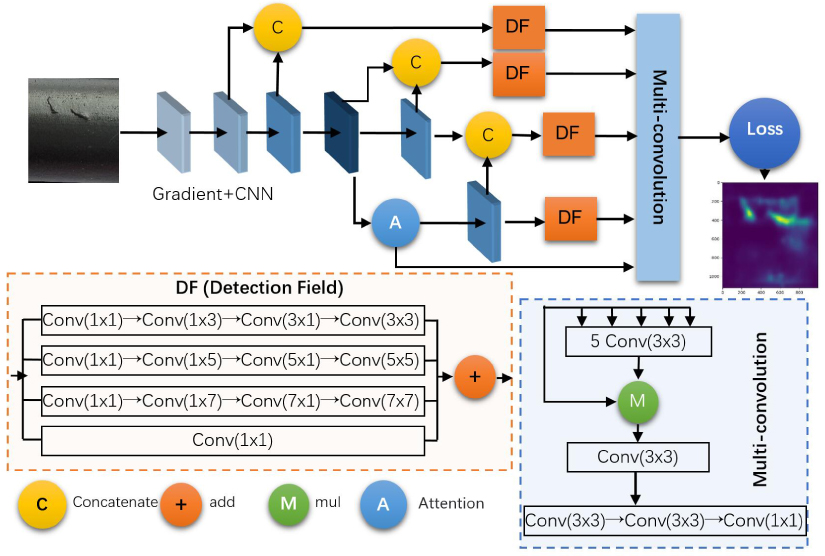
We propose a method for identifying the flaws on the product surface using a deep Convolutional Neural Network (CNN), making them more efficient and effective. Our approach – Gradient-weighted Flaw Detecting (GWFD), uses the gradients of the significant layers (identify the flaws in a CNN) to produce a localization map identifying the flaw areas on the product surface in the image for detecting industrial products. The problem with manual inspection is that it requires human and material resources, and accuracy cannot be guaranteed. The crux of identifying the flaws on the product surface is that the method can extract the features of the flaws and achieve a precise location. Unlike previous surface detection methods, GWFD combines an attention mechanism with edge detection to precisely focus on the flaw area of the product surface. At the same time, simple heuristic fine-tuning and reinforcement learning are applied during the training stage. Experiments show that GWFD achieves the precise location and detection of the flaws compared with other methods such as SIFT, KAZE, SSD MobileNet (V3), and SINet. GWFD helps users successfully inspect the flawed area of auto parts and has always been an industry pioneer for identifying flawed areas on the product surface. We hope that our work will promote and complete the practical application in more production lines.
Quanyou Zhang, Yong Feng, Lufeng Wang, Yong-heng Wang, Bao-hua Qiang, Yaohui Li, Yibin Wang, "An Effective and Efficient Method for Detecting Defective Areas of Auto Parts based on CNNs" in Journal of Imaging Science and Technology, 2023, pp 1 - 10, https://doi.org/10.2352/J.ImagingSci.Technol.2023.67.4.040406
 Find this author on Google Scholar
Find this author on Google Scholar Find this author on PubMed
Find this author on PubMed

